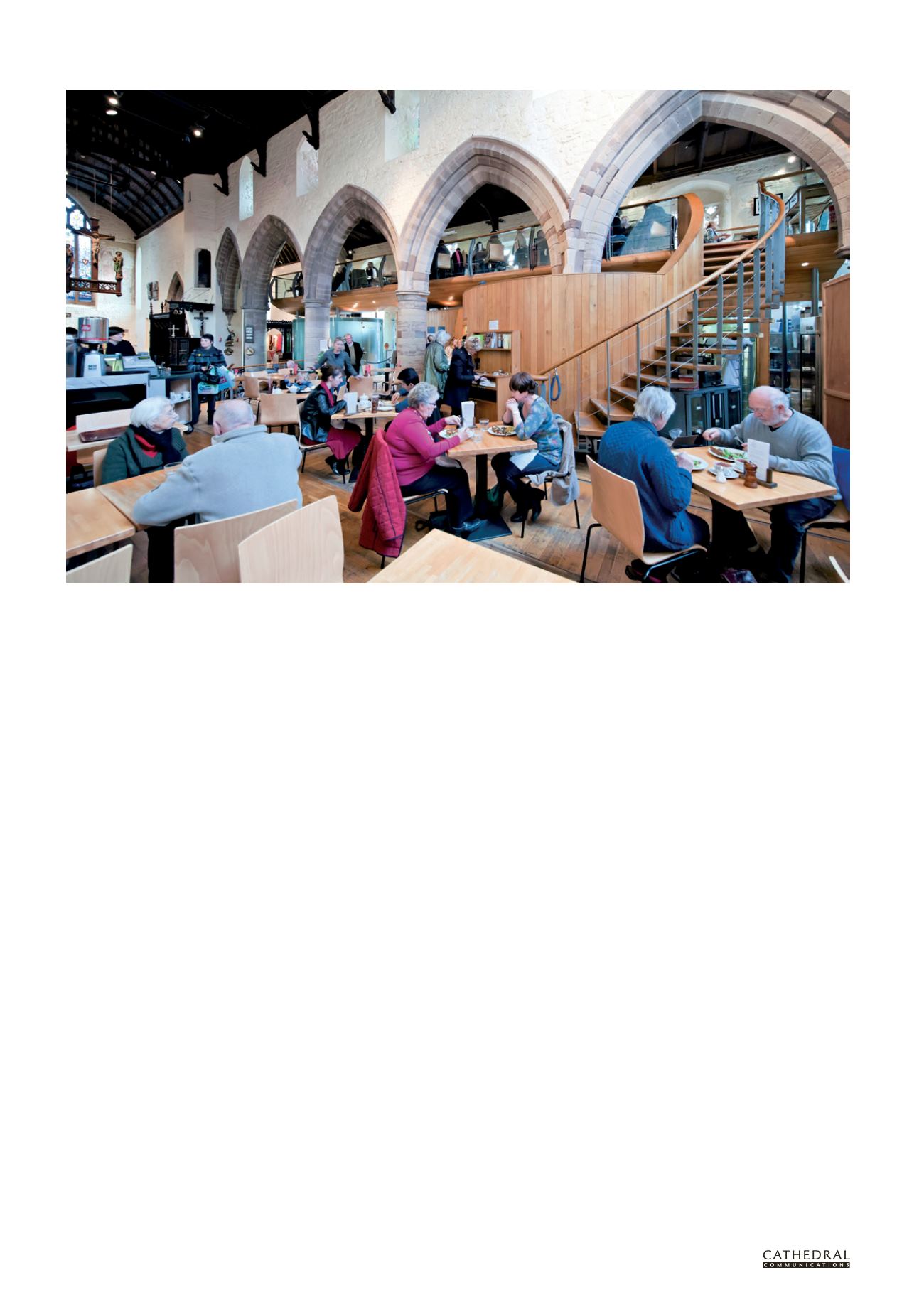

4
BCD SPECIAL REPORT ON
HISTORIC CHURCHES
24
TH ANNUAL EDITION
from toddlers upwards, reaching
many who lack confidence to
find self-worth elsewhere.
The practical contribution they make to
their communities is huge but we would
be wrong to ignore their deeper symbolic
significance. As Sarah Coakley (see
Further Information) observes:
‘The Church is not a building.’ That
is most certainly true. But buildings
in which ‘prayer has been valid’
are more like people than stone
or brick, because of their vibrant
association with the folk we and
others have loved. They are not so
much haunted as ‘thin’ to another
world in which past, present and
future converge. And when, as in
the parish system in England, each
such building holds the memories
of a particular geographical
community, it is well to be aware
of its remaining symbolic power
– even if it now seems neglected,
under-used or actively vandalised.
They are the repositories of the stories of
communities, their parishes. The notion
of ‘parish’, derives from the integration of
the Christian church into the civic life of
the Roman Empire. The English parish
system is very ancient and its churches
are valued by their parishioners but by
many others besides. Writing in
The
Shell Guide to England’s Parish Churches
,
Robert Harbison in 1992 described what
he called a ‘vast avalanche’ of books on
England’s parish churches. These are
guides for church-spotters, of which
John Betjeman’s
English Parish Churches
(1958) is still the paradigm. They often
comment on the broader place of the
parish church in the English natural
and social landscape though the latter
is only now being investigated more
thoroughly (see Further Information,
Davison and Millbank, Rumsey).
There is much to celebrate in terms of
the health of these wonderful buildings.
A glance at 18th-century prints makes
clear the parlous state into which the
majority had fallen at that time. Following
all the restoration and building work of
the 19th century, war consumed much
energy during the first half of the 20th
century. Fortunately, huge amounts of
money have been spent on them in the
last generation. Our churches are arguably
in a better state as far as their fabric is
concerned than has ever been the case.
What of the future? The Church
of England is the custodian of these
buildings which are everyone’s heritage
and maintaining them is an increasing
burden. In financial terms we are the least
established church in Western Europe:
before the recent
Roof Repair Fund
and
First World War Centenary Cathedrals
Repair Fund
there had been no direct
government funding for the repair of
parish churches. In most other countries
there is either a church tax or the state
is responsible for the maintenance of
historic churches.
Our approach has its advantages:
most of our churches feel ‘loved’ in a way
that, for example, French churches do
not. There is, however, a challenge and,
with that in mind, I was asked by the
Archbishops’ Council of the Church of
England to chair a group charged with
undertaking a review of the Church
of England’s stewardship of its church
buildings.
In September 2015 the group
produced its report, which was well
received by the Archbishops’ Council and
Church Commissioners. It disappointed
some who feel that church buildings
are a millstone around the neck of the
Church of England. As Giles Fraser put
it in
The Guardian
, they are ‘sapping the
energy of our wider social and religious
mission, and transforming the church into
a buildings department of the heritage
industry’. We disagree. We feel that to
take a Beeching type axe to the churches
of this land would be to do a disservice
both to the church and to the nation. We
feel this to be the case precisely because
they are more than historic monuments
and because they are still, wonderfully,
being used for the purpose for which they
Community centre and café at All Saints, Hereford (Photo: Alastair Lever/Archbishops’ Council)


















